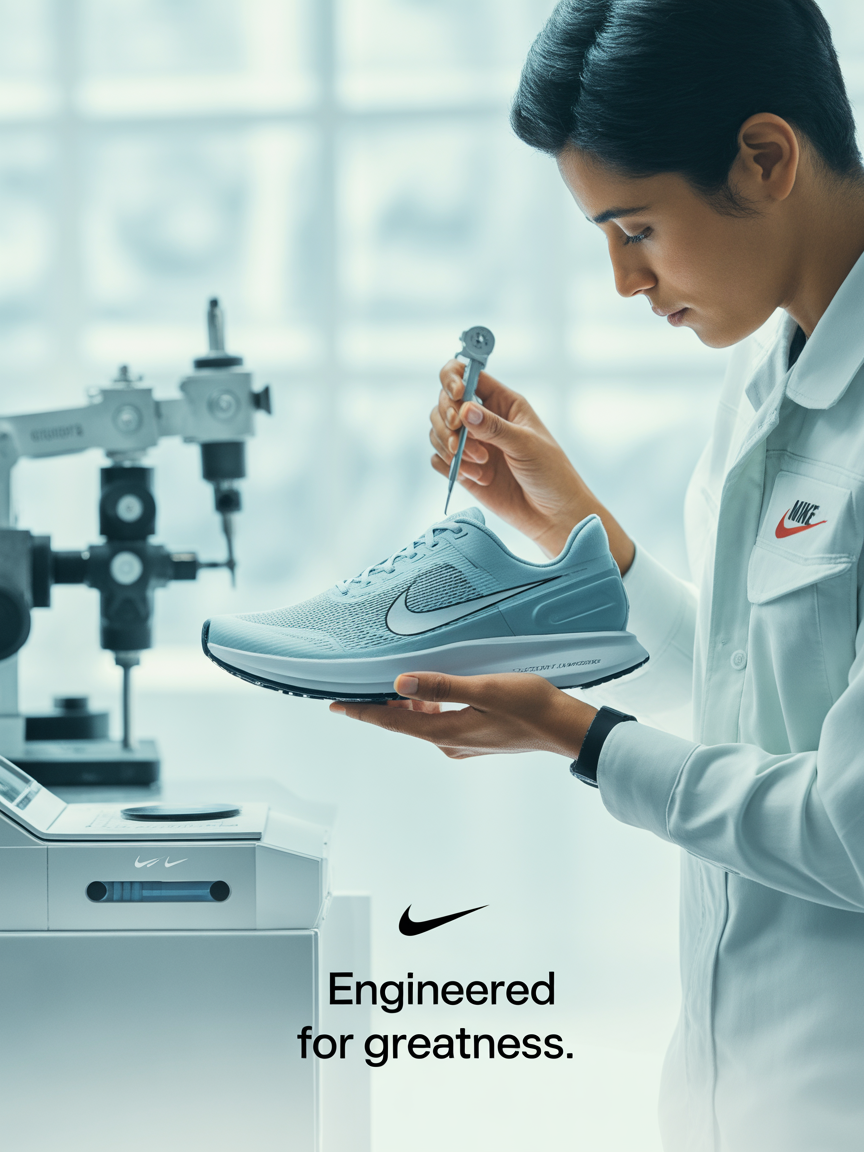Journey through the fascinating process of creating iconic Nike footwear. From raw materials to finished products, discover the blend of cutting-edge technology and skilled craftsmanship behind every pair.
Design and Prototyping
Concept Sketching
Designers create initial sketches based on athlete insights.
3D Modeling
Digital models refine dimensions and ergonomics.
Prototyping
Physical samples undergo rigorous testing.
Design Approval
Final designs move to production planning.

Material Selection and Preparation
Sustainable Textiles
Recycled polyester and organic cotton reduce environmental impact.
Performance Fabrics
Engineered mesh provides breathability and support.
Cushioning Systems
Proprietary foams deliver responsive comfort.
Durable Outsoles
Specialized rubber compounds enhance traction.

Cutting and Component Preparation
Digital Pattern Creation
Computer algorithms optimize material usage. Each shoe requires 30-40 separate pieces.
Laser Cutting
Precision lasers cut components with millimeter accuracy. This reduces waste by 3-5% compared to manual methods.
Component Organization
Workers sort pieces into kits. Each kit contains all components needed for one pair.
Pre-Treatment
Materials undergo coating processes. This enhances durability and water resistance.

Upper Assembly
Initial Stitching
Skilled workers join primary panels. Special machines maintain consistent tension.
Reinforcement threads add structural integrity. Each stitch follows precise patterns.
Component Integration
Lacing systems and support elements are attached. This creates the shoe’s framework.
Workers add logos and decorative elements. Brand identity becomes part of the structure.
Final Upper Completion
Quality inspectors check every seam. They verify dimensional accuracy against specifications.
Completed uppers move to lasting stations. They’re now ready for sole attachment.
Sole Production and Attachment
Compound Mixing
Proprietary rubber formulas create outsoles
Midsole Molding
Foam compounds are shaped through injection
Upper Bonding
Heat-activated adhesives create permanent bonds
Pressure Curing
Hydraulic presses ensure structural integrity
Quality Control and Testing

Visual Inspection
- Seam alignment verification
- Material defect detection
- Color consistency checks
Mechanical Testing
- Flex durability assessment
- Impact resistance measurement
- Traction performance analysis
Fit Validation
- Dimensional verification
- Weight consistency checks
- Biomechanical assessment
Packaging and Distribution
Annual Pairs
Nike produces over 450 million pairs yearly
Countries
Manufacturing spans five continents
Recycled Packaging
Most boxes use recycled materials
Markets
Products ship to countries worldwide


